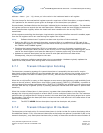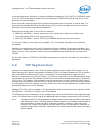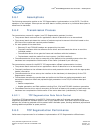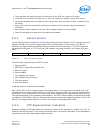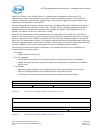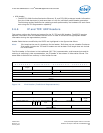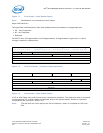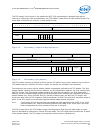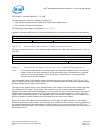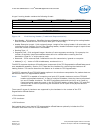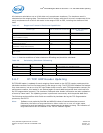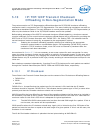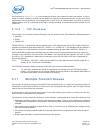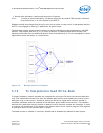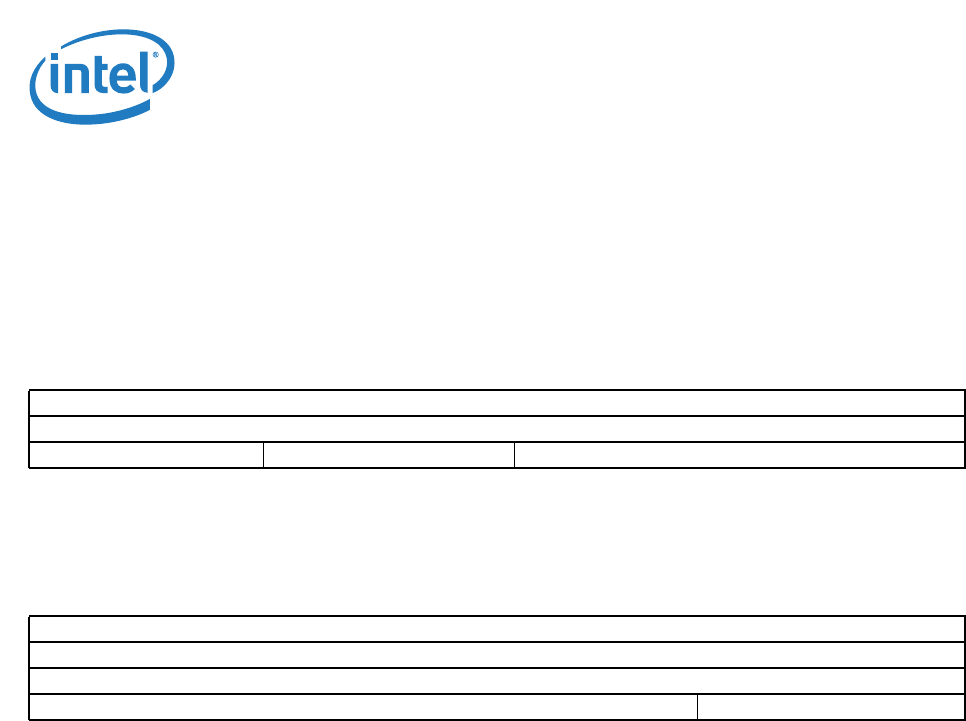
Intel
®
82575EB Gigabit Ethernet Controller — IP and TCP/UDP Headers
Intel
®
82575EB Gigabit Ethernet Controller 324632-003
Software Developer’s Manual and EEPROM Guide Revision: 2.1
154 January 2011
TCP Length = min(PAYLOADLEN) + L5_LEN
The two flags that might be modified are defined as:
• PSH: Receiver should pass this data to the application without delay
• FIN: Sender is finished sending data
The handling of these flags is described in Section 5.8.7.
Payload is normally MSS except for the last packet where it represents the remainder of the payload.
Figure 16. TCP Pseudo Header Content (Traditional Representation)
The Layer 4 Protocol ID value in the pseudo-header identifies the upper-layer protocol (6 for TCP or 17
for UDP).
Figure 17. TCP/UDP Pseudo Header Content for IPv6 (Traditional Representation)
Note: If the IPv6 packet contains a routing header, the destination address used in the pseudo-
header is that of the final destination. At the originating node, that address is in the last
element of the routing header; at the recipient(s), that address is in the Destination
Address field of the IPv6 header.
The next header value in the pseudo-header identifies the upper-layer protocol (6 for TCP or 17 for
UDP). It differs from the next header value in the IPv6 header if there are extension headers between
the IPv6 header and the upper-layer header.
The upper-layer packet length in the pseudo-header is the length of the upper-layer header and data
(TCP header plus TCP data). Some upper-layer protocols carry their own length information (for
example, the Length field in the UDP header); for such protocols, that is the length used in the pseudo-
header. Other protocols (such as TCP) do not carry their own length information, in which case the
length used in the pseudo-header is the payload length from the IPv6 header minus the length of any
extension headers present between the IPv6 header and the upper-layer header.
Unlike IPv4, when UDP packets are originated by an IPv6 node, the UDP checksum is not optional.
Whenever originating a UDP packet, an IPv6 node must compute a UDP checksum over the packet and
the pseudo-header and if that computation yields a result of zero, it must be changed to FFFFh for
placement in the UDP header. IPv6 receivers must discard UDP packets containing a zero checksum and
should log the error.
IPv4 Source Address
IPv4 Destination Address
Zero Layer 4 Protocol ID TCP Length
IPv6 Source Address
IPv6 Final Destination Address
TCP Packet Length
Zero Next Header



